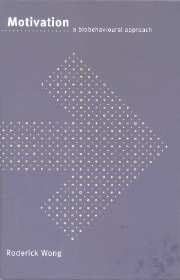Book contents
- Frontmatter
- Contents
- Preface and acknowledgements
- 1 Introduction and perspective
- 2 Mating and reproductive activities
- 3 Parental/maternal activities
- 4 Feeding activities
- 5 Food selection
- 6 Drinking activities
- 7 Stimulus seeking and exploratory activities
- 8 Aversive motivation systems: fear, frustration and aggression
- 9 Social motivation: attachment and altruism
- 10 Conclusions and retrospective
- References
- Author index
- Subject index
6 - Drinking activities
Published online by Cambridge University Press: 10 December 2009
- Frontmatter
- Contents
- Preface and acknowledgements
- 1 Introduction and perspective
- 2 Mating and reproductive activities
- 3 Parental/maternal activities
- 4 Feeding activities
- 5 Food selection
- 6 Drinking activities
- 7 Stimulus seeking and exploratory activities
- 8 Aversive motivation systems: fear, frustration and aggression
- 9 Social motivation: attachment and altruism
- 10 Conclusions and retrospective
- References
- Author index
- Subject index
Summary
Drinking is the means by which an organism acquires fluids necessary for the normal functioning of the cells in the body. Water is the medium through which the chemical processes of the body operates. It is the largest component of the body and its volume must be defended within narrow limits. ‘The proportion of water to lean body mass (the body without fat) is essentially constant at 70%’ (Rolls & Rolls, 1982). The energy processes of the cell occur within a fluid medium. In Chapter 4, it was noted that feeding preceded by food-seeking behaviour, is a necessity of life. Similarly, drinking preceded by water-seeking behaviour is also a necessity of life. Living organisms are endowed with mechanisms that have been selected for, and which cause them to be motivated to seek and ingest water when their internal environment's water balance is disturbed. The animal's nervous system is supplied with information from a sample of body fluids, and drinking decisions are based upon the state of this sample. Just as the thermostat samples temperature at a site in a room, it is assumed that the drinking mechanisms sample the fluid environment at one or more sites.
Fluid regulation in living organisms represents a balance between intake and excretion of water. Each side of the equation consists of a ‘regulated’ and an ‘unregulated’ component. The regulated component represents factors which act specifically to maintain body fluid homeostasis (water balance). The primary factors that regulate water balance are thirst and pituitary secretion of the anti-diuretic hormone (ADH), which is also known as vasopressin (Verbalis, 1990).
- Type
- Chapter
- Information
- MotivationA Biobehavioural Approach, pp. 148 - 163Publisher: Cambridge University PressPrint publication year: 2000

